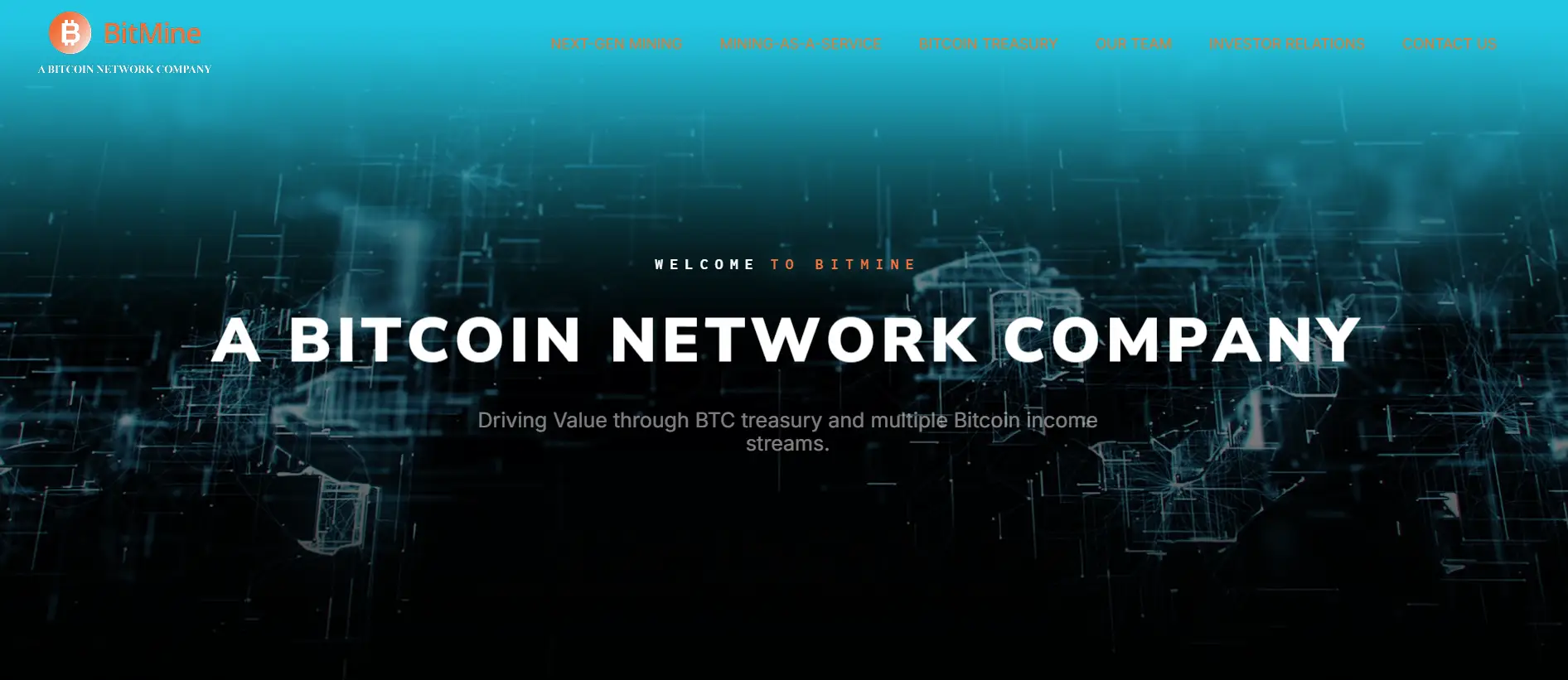BitMine Immersion Technologies is a publicly traded company offering corporate mining, synthetic hashrate contracts, and cryptocurrency reserves in Bitcoin and Ethereum. The project combines advanced immersion cooling technology, a unique power tokenization strategy, and a financial infrastructure focused on institutional clients. Amid growing interest in enterprise-level digital asset custody and environmentally sustainable mining, BitMine demonstrates a scalable business model focused on efficiency and transparency.
- General Concept and Market Positioning
- Immersion Cooling Technology and Synthetic Hashrate
- MaaS Platform: Corporate Mining as a Service
- Crypto Reserves and Institutional Asset Management
- Team, Finances, Risks, and Strategic Outlook

General Concept and Market Positioning
BitMine Immersion Technologies (ticker BMNR) is a publicly traded company operating at the intersection of mining infrastructure and financial solutions in the Web3 space. The company focuses on:
-
using innovative cooling technology to improve crypto mining efficiency,
-
offering synthetic hashrate contracts to external clients,
-
developing corporate services for public companies and funds interested in holding reserves in BTC or ETH.
The company positions itself as a provider of comprehensive, energy-efficient mining infrastructure. Through immersion cooling, it reduces operating costs and minimizes the carbon footprint. Special attention is given to institutional clients, offering auditing, reporting, asset management, and GAAP compliance, which distinguishes BitMine from conventional mining farms.
Immersion Cooling Technology and Synthetic Hashrate
BitMine’s technological foundation is immersion cooling. All mining devices are submerged in dielectric fluid, offering the following benefits:
-
Enhanced performance: safe overclocking of ASIC devices;
-
Extended lifespan: protection from dust and overheating;
-
Cost reduction: savings on ventilation and air conditioning;
-
Compact setup: suitable for deployment in unconventional locations;
-
Eco-friendly: PUE as low as 1.05, near optimal efficiency.
The second key technology is synthetic mining, a system where clients invest in future hashrate while BitMine guarantees BTC payouts based on actual output. This allows the company to raise funds without equity dilution or selling off core assets.
This approach lowers investment risks and enables participation in mining even without owning physical infrastructure.
MaaS Platform: Corporate Mining as a Service
BitMine is developing the MaaS (Mining-as-a-Service) concept for companies seeking to mine BTC without capital expenditure on hardware or staff. This service primarily targets institutional clients, including public companies, family offices, and investment funds. The platform offers:
| Service | Description |
|---|---|
| ASIC Procurement & Hosting | Equipment selection, deployment in immersion modules |
| Operations Management | Pool setup, support, firmware upgrades |
| BTC Reporting & Payouts | Automated payouts and GAAP/IFRS-compliant reporting |
| Technical Audit | Support from independent auditors and consultants |
| Tax & Compliance Advisory | Legal accounting support for corporate clients |
The platform also offers white-label solutions for companies looking to launch branded mining services without investing in infrastructure. This makes BitMine more than a hardware operator — it becomes a full-scale enterprise partner.
Crypto Reserves and Institutional Asset Management
In addition to mining, BitMine actively builds a crypto treasury. In June 2025, the company acquired 154 BTC worth $16.3 million. Later, an Ethereum fund was launched, and BitMine announced plans to become one of the largest public ETH holders.
Key features of the strategy include:
-
Diversification across BTC and ETH;
-
Collaboration with institutional custodians and auditors;
-
Integration of hedging strategies with synthetic mining;
-
Private placement fundraising ($250 million in July 2025);
-
Support from Kraken, Galaxy, Pantera, and Founders Fund.
This strategy allows the company not only to accumulate high-value digital assets but also to mitigate volatility in cash flow through hedging and structured instruments. Backing from top-tier funds enhances institutional trust. Combining mining with treasury services positions BitMine as a comprehensive solution provider for the institutional Web3 sector.
Team, Finances, Risks, and Strategic Outlook
BitMine is more than just a tech platform — it is a mature corporate structure built on traditional financial standards. The project is led by seasoned professionals with backgrounds in banking, investment advisory, and crypto finance. This leadership ensures both strategic stability and investor transparency — vital in the era of institutional crypto adoption.
BitMine is led by seasoned professionals from finance and crypto industries:
-
Jonathan Bates (CEO) — former executive at JP Morgan;
-
Michael Maloney (CFO) — co-founder of Galaxy Digital Advisory;
-
Tom Lee (Advisor) — founder of Fundstrat and one of the top crypto analysts.
Despite a strong team and rapid development, the project faces risks. High volatility of BTC and ETH remains a core concern, as both are central to BitMine's reserve strategy. Regulatory uncertainty, especially in the U.S., adds pressure — particularly around energy usage in mining. Even immersion cooling requires constant updates to remain efficient as ASIC devices evolve. Meanwhile, competition from large-scale mining hosts continues to impact profitability.
Still, BitMine maintains a strong strategic edge. Its synthetic mining model attracts funding without adding debt. The MaaS platform democratizes mining access for public companies. With institutional backing and ESG alignment, BitMine is well-positioned to set standards for the next generation of Web3 infrastructure.





